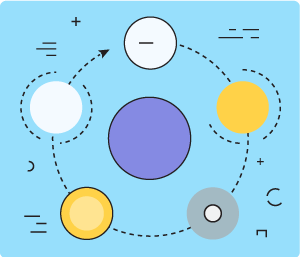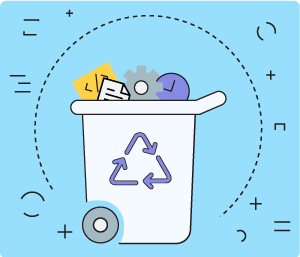The ultimate guide to Microsoft 365 document management
Explore the basics of document management in Microsoft 365. Examine the possibilities of integration OneDrive for Business, SharePoint, and Teams.

Find out how to benefit from lean software development from the get-go.
In the world of software, “revolutions” emerge nearly every month. Each shift in IT, it seems, whether in ways of using software development teams or management of software projects, gets labeled a “breakthrough”, which turns the term into a buzzword, stripped of any meaning. However, every once in a while, important innovations do appear on the web, and it’s hard for them to cut through all the noise to grab your attention.
Therefore, today, we’ll introduce one of them: lean software development – a ground-breaking methodology that has completely reshaped the whole customer value stream in IT and yet, unfortunately, remained obscure to a lot of entrepreneurs.с

The concept of lean, in general, was pioneered by Toyota, the Japanese automotive giant, as a means to reduce waste in manufacturing, but soon grew explosively popular and was adapted, among others, by many software development companies, to various competencies in the IT business.
Lean development as a separate methodology came to us from the book by Tom and Mary Poppendieck and is now expanded upon by the ever-growing body of literature.
As the title suggests, lean thinking aims at removing all things unnecessary, all the fat, from software engineering. Its principles resonate mainly with Agile development; some even consider the two methodologies inseparable. Others, on the other hand, admitting to the shared philosophy, still state that lean is more convertible regarding development strategy.
Overall, there are 7 principles to Lean software development practices, each aiming to quicken delivery, build quality and bring higher value to end-user:
To fulfill them, Lean makes use of such tools:
Inventory management – a practice of reducing the number of operations in progress at once through applying a theory of constraints and queuing theory.
Kanban – a pull project management system that limits tasks being completed simultaneously, preventing overloading of the software development team and process.
Value stream mapping – a method of visualization of the development cycle as a whole, from a client’s request to a deployment stage- demonstrates and helps optimize the time spent on waiting and actual processing. By the way, most software development companies use special intelligent solutions. This in turn has a very positive impact on the automation of business processes and master data management.
Now, let’s look closer into each of the fundamental principles of lean development principle, the seven commandments of lean software development:

Waste reduction, the first rule in Lean engineering, defines its purpose. Mostly, the methodology tries to fight these 9 types of waste.
To identify and eliminate waste, regular meetings are held by Project Managers after each short iteration. They allow team members to report progress, point out bottlenecks, and suggest which changes to implement during the next iteration, facilitating learning. The constant feedback loops enable improvements to the code to be implemented in small, manageable increments.

Efficient quality management is a guiding principle in lean development methodology, as issues in this area lead to different types of waste. Repetitive testing of the code, mistakes in logging, and their resolvent take time and therefore drive development costs higher; many popular lean development tools strive to address such nuances of unnecessary code before they even happen.
Various tactics are used in lean and all related lean and agile principles and development types to ensure that quality is maintained throughout the software development process. Engineering is kept flexible. Every small iteration, each loop is followed by an immediate assessment. The time between software development stages is permanently reduced as much as possible, and trade-offs (occasional sacrifices of qualify for other project dimensions – time, costs, and scope) are regularly discussed and considered.
Additionally, Pair Programming or Test-Driven Development can be applied to fix bugs before the fact.
Pair Programming applies the “two heads better than one” principle to software development practices and engineering. Two developers are completing each task, and combined experience allows them to figure out more effective solutions, foresee possible quality issues better, and deliver higher quality than one of them would singly.
Test-Driven Programming turns upside down the conventional “build, then scrutinize” approach. Tests are written before the code is, so an engineer, knowing precisely how features’ conditions will be checked, works out all probable scenarios while developing.

Lean software development principles originated from lean manufacturing, where the ultimate goal had always been a simplified, standardized pipeline production that requires no knowledge gaps and rare modifications. Therefore, when Lean’s “amplified learning” concept was introduced to a physical business, it was a game changer.
In software engineering, however, the importance of learning was never in doubt, and lean development methodology, perhaps, only proven it once more. Each time the code is written, engineers reflect on it immediately and then incorporate, during the following iterations, the lessons they have learned. That’s true of whole lean software development and all agile methodologies. Implementing lean software development methodology often uses paired programming to ensure that particular knowledge isn’t accumulated exclusively by one engineer writing a specific code.
Besides that, learning is amplified through continuous integration, ample code reviewing, meetings, and establishing metrics from data that are cross-team applicable. As a client, you get to voice your feedback to the lean development tools and team upon each iteration; collecting it and adjusting future efforts to your requirements is paramount to all lean developers.

It happens or rather used to happen often in traditional project management, that your application, though meeting the spec precisely, turned out entirely unfit for the market by the release date. Too many changes have emerged since your requests – in the business environment, technologies your competitors use, and in the market’s course overall, changes that have not been addressed throughout the lean development process.
Lean software development methodology recognizes this threat. It always leaves room for improvement by postponing irreversible decisions until all the needed experimentation is done. As much info as possible is gathered until you’ve checked and examined your requirements comprehensively and there are no doubts about their relevance.
The methodology always strives to construct software to be flexible so that when new knowledge is made available, engineers can act upon it without completely wrecking what’s been done earlier. As all new projects nowadays are bound to face uncertainty, the importance of this is hard to overestimate.

Historically, meticulous and long-term planning was the key to business success. Only when each aspect of your strategy had been worked out thoroughly and agreed upon, strict milestones, and the pace of manufacturing and software development had been established were you considered ready to enter the software market.
As practice showed, however, such an approach often led to a catastrophe. It made engineers spend too much time building complex, monolithic systems packed with unneeded features. It restrained them from adapting the software to the ever-changing environment and client requirements.
As a result, the lean teams of engineers came up with the concept of Minimum Viable Product (MVP) and the opposite philosophy: build quickly, include little functionality, and launch a product to the market as fast as possible. Then, study the reaction.
Such an approach allows us to incrementally enhance a piece of software based on the customer feedback we collected from real customers and ditch everything of no value.

“Lean software development process is a system aimed at empowering team members, rather than controlling them. It goes beyond establishing basic human courtesy; it instills trust within each project. Engineers are free to make important development decisions based on the knowledge they receive while writing code and their own judgment and providing that they’re experienced enough to do so.
Such an approach contributes a lot to incremental development and a faster application of changes to software that are needed to reflect the changes in the environment, and it keeps your developers motivated.
And what’s more important than the team’s motivation? However, setting up lean development teams in a collaborative atmosphere and keeping the perfect balance of control within the project is challenging. Developers should be let to do their thing and implement changes that they feel are necessary, but they also ought to report on their decisions; to explain the approach they intend to take to managers and, more importantly, to you – the client. Ultimately, you are in charge of the overall agile software development course.

According to Mary and Tom Poppedniecks, sub-optimizing is one of those unfortunate tendencies that, though unproductive, still occurs often in traditional IT departments. Managers lean software development teams choose to break each issue into multiple constituent parts, which they then have their teams fix separately, without optimizing entire systems. The Lean approach to software development opposes that and focuses on the value stream.
Lean principles allow to optimize lean software development team’s workflow, create unity among everyone involved in the project, and inspire a sense of shared responsibility and shared objectives, which translates into higher performance and customer satisfaction.
Although lean agile methodology introduces seven lean principles and a customer-oriented, flexible system to software development, people make it work. Therefore, look for expertise when hiring a team to build your application; professionals who are committed to continuous improvement and qualified enough to create knowledge that embody the core values of Lean methodology – delivering as much weight in the shortest amount of time and in the most efficient way possible.
Putting all the factors above together, contact us and get started with lean software development in a matter of days. Take advantage of such a great opportunity.
Start a conversation
We’d like to hear from you. Use the contact form below and we’ll get back to you shortly.